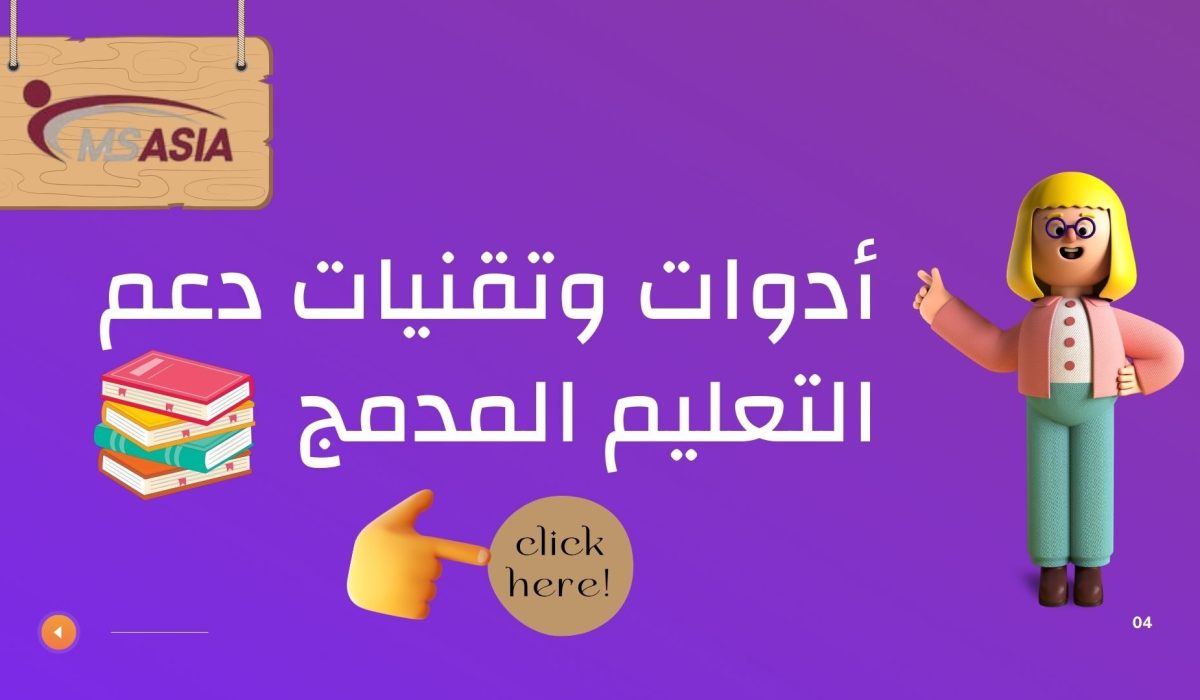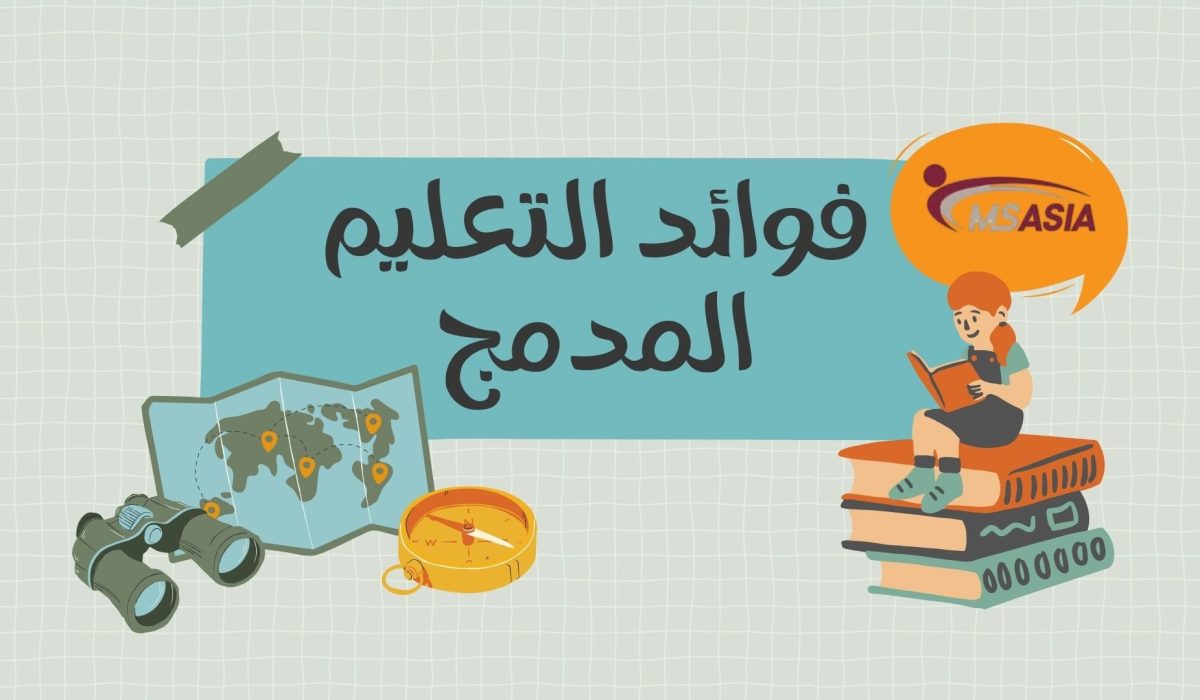The Future of Blended Learning: Transformative Shifts in the Age of Technology and Artificial Intelligence
May 17, 2025 0 0

Blended learning—often called hybrid learning—is a structured approach that combines face-to-face classroom instruction with online learning. In this model, students split their learning between guided lessons with a teacher and digital platforms, giving them more control over when, where, and how fast they progress compared to traditional programs.
Advocates highlight two key strengths: the ability to collect rich data on student performance, and the power to tailor materials and assessments to different learning styles.
What is Blended Learning?
Blended learning is neither fully traditional nor entirely online—it’s an intentional fusion of both. It typically begins in the classroom, then extends into digital spaces through interactive platforms and activities that empower students to learn at their own pace.
Teachers shift from being sole lecturers to mentors and facilitators, while online systems track student progress to personalize learning pathways. Though its application varies across contexts, research consistently shows that blended learning enhances academic achievement.
It’s more than a trend—it’s becoming essential. By balancing human interaction with technology, blended learning prepares students for the future with stronger critical-thinking skills, self-directed learning habits, and adaptability in an ever-changing world.

The Difference Between Blended Learning and Hybrid Learning
The terms Blended Learning and Hybrid Learning are often used interchangeably, yet they represent two distinct approaches with different goals and applications.
1. Blended Learning
Integrates face-to-face classroom interaction with digital activities for all students.
Creates a single, unified learning pathway where online content complements in-class sessions.
Example: A student watches a lecture video at home, then applies the concepts in a guided classroom discussion.
All students participate in both formats (online + in-person).
The digital component enriches the in-class experience rather than replacing it.
2. Hybrid Learning
Splits students into two groups:
One attends physically in the classroom.
The other joins remotely at the same time.
Offers flexibility, allowing learners to choose between on-site or virtual attendance.
Example: A teacher delivers a lesson in class while streaming it live to students at home.
The same content is delivered to everyone, but participation methods differ.
Online and in-person activities are not necessarily integrated.
Key Differences
Aspect | Blended Learning | Hybrid Learning |
|---|---|---|
Goal | Enhance learning quality through integration. | Provide flexibility in attendance. |
Participants | All students engage in both digital and in-person tasks. | Students are divided between onsite and online. |
Interaction | Synchronous + asynchronous. | Mostly synchronous (real-time). |
Role of Tech | Complements classroom teaching. | Acts as a delivery tool for remote learners. |
Example | Flipped Classroom model. | Live-streamed lectures. |
Why the Confusion?
Both models rely on technology, but their purposes differ:
Blended Learning integrates online and face-to-face elements to achieve specific learning outcomes.
Hybrid Learning simply divides students based on how they attend.
Principles of Blended Learning
Blended learning is a thoughtful, strategic balance of digital and face-to-face education. Each element complements the other, giving students flexibility over pace, time, and place while still maintaining direct human interaction. Core principles include:
Strategic Integration: Choosing which skills are best taught in-person (e.g., labs, debates) and which can be delivered online (e.g., theory, quizzes).
Data-Driven Personalization: Using digital tools to track student performance and adjust in-class activities accordingly.
Dual Interaction: Encouraging both online discussion and face-to-face collaboration.
Integrated Assessment: Combining adaptive online quizzes with traditional classroom evaluations like presentations.
Flexible Content Design: Providing multiple formats—videos, readings, podcasts—to suit different learning preferences.
Models of Blended Learning
1. Flipped Classroom
Students learn theoretical content online at home (e.g., Newton’s Laws via videos).
Classroom time is reserved for experiments, applications, and discussions.
Supported by platforms such as YouTube, Edpuzzle, or Moodle.
Shifts focus from passive memorization to active learning.
2. Rotation Model
Students rotate between learning stations, some digital and some in-person.
Station Rotation: Within one classroom (e.g., teacher-led discussion, digital exercises, group work).
Lab Rotation: Moving between a classroom and a computer lab.
Allows multiple learning styles to be addressed simultaneously.
3. Flex Model
Most content is delivered online, with teachers available for support as needed.
Example: A vocational training student learns through digital modules and seeks instructor help for complex problems.
High flexibility in pace and learning path.
Often used in higher education and professional training.
Case in Point: MS Asia applies the Flex Model in its professional programs, such as FIDIC contract courses, where participants complete online modules and attend weekly sessions with experts to tackle real-world challenges.

In-Person Activity | Online Activity | Objective |
|---|---|---|
Group discussion | Watching an educational video | Understanding key concepts |
Laboratory experiment | Solving interactive exercises | Applying theories |
Class presentations | Participating in an online forum | Enhancing critical thinking |

To achieve an effective balance between digital and in-person components, a variety of technological tools are used to facilitate interaction and content management. Below are the main categories with practical examples:
1. Learning Management Systems (LMS)
These platforms organize course materials, track student progress, and provide a central communication hub.
Popular examples:
Moodle: Open-source platform that allows customized learning pathways and assessment management.
Blackboard: Widely used in universities to support interactive tasks and virtual discussions.
Google Classroom: Integrates seamlessly with Google tools (Drive, Meet).
Uses:
Uploading lectures, assignments, and learning resources.
Generating reports on student participation and performance.
MS Asia offers a strong model of blended learning support by combining digital content (such as recorded language courses) with in-person interaction (workshops and conferences). Their programs are tailored to fit both Asian and Arab contexts.
2. Real-Time Interaction Tools (Synchronous)
These tools enable live communication between teachers and students, whether on-site or remote.
Popular examples:
Zoom: Virtual meetings with breakout rooms for group activities.
Microsoft Teams: Combines chat, meetings, and file sharing.
Google Meet: Simple interface with built-in recording.
Innovative uses:
Hosting live Q&A sessions.
Inviting external experts to join classes remotely.
3. Self-Paced Learning Resources (Asynchronous)
These tools allow students to learn at their own pace while receiving immediate feedback.
Examples:
Interactive Videos:
Edpuzzle: Embed questions and tasks inside videos.
PlayPosit: Turn videos into interactive lessons.
Online Quizzes:
Quizizz: Game-like quizzes with engaging design.
Kahoot: Real-time competitive quizzes.
Google Forms: Auto-graded online assessments.
Digital Simulations:
PhET: Science simulations (physics, chemistry).
Labster: Virtual lab experiences.
4. Collaboration and Assessment Tools
These tools enhance teamwork and support practical skill evaluation.
Examples:
Padlet: Digital bulletin board for idea sharing.
Miro: Interactive whiteboard for brainstorming.
Flip (formerly Flipgrid): Short video responses for class discussions.
5. Artificial Intelligence Tools
AI provides personalized learning experiences and automated support.
Examples:
ChatGPT: Helps answer student questions or generate exercises.
Squirrel AI: Adaptive learning platform that identifies student weaknesses.
How to Choose the Right Tools
Define your learning goal: Do you need live interaction, self-paced study, or assessment?
Check compatibility: Ensure tools can integrate (e.g., Zoom with Moodle).
Prioritize ease of use: Select tools with simple interfaces to avoid confusion.
Consider cost: Opt for free, open-source tools when budgets are tight.
Best Practices for Integrating Tools
Training: Provide guidance for teachers and students on how to use the tools.
Feedback: Collect input from learners on which tools they find most effective.
Continuous updates: Stay informed about new technologies to enhance the learning experience.

Blended learning brings significant benefits to all stakeholders: learners enjoy flexibility and personalized interaction; institutions reduce costs while improving quality and scalability; and teachers diversify their teaching methods, analyze student data, and save time. By using MS Asia’s platform, organizations can also achieve their development goals through tailored training packages—such as leadership programs or cybersecurity courses—helping cut costs and boost employee efficiency by up to 40%.
Stakeholders and Benefits
Group | Key Benefits |
|---|---|
Learners | Flexibility, interaction, personalized learning. |
Institutions | Cost savings, improved outcomes, scalability. |
Teachers | Innovative teaching methods, data analysis, effective time management. |
Challenges of Blended Learning and How to Overcome Them
Blended learning is not free of obstacles, but recognizing and addressing them is essential for success. Below are the key challenges with practical solutions:
1. Technological Challenges
Challenge:
Limited digital infrastructure (weak internet, lack of devices).
Difficulty unifying platforms for both students and teachers.
Solutions:
Provide loaned devices or set up computer labs.
Use lightweight platforms that work with low bandwidth (e.g., Google Classroom).
Train teachers on open-source tools like Moodle.
2. Resistance to Change
Challenge:
Teachers’ hesitation or lack of trust in technology.
Students’ preference for traditional learning.
Solutions:
Offer professional development in educational technology (e.g., TOT courses).
Provide incentives for teachers adopting innovative blended practices.
Involve students in shaping the learning experience (e.g., surveys).
3. Balancing Online and Offline Components
Challenge:
Over-reliance on technology at the expense of human interaction—or vice versa.
Difficulty determining the optimal mix between digital and face-to-face learning.
Solutions:
Adopt flexible models depending on subject type (e.g., practical subjects require more in-person time).
Use student interaction data to adjust the blend ratio.
4. Inconsistent Quality of Digital Content
Challenge:
Low-quality or unengaging digital materials.
Content not adapted to different learning styles (visual, auditory, kinesthetic).
Solutions:
Establish quality standards (clear audio, interactivity, regular updates).
Use tools for diverse content creation (e.g., Canva for design, H5P for interactive activities).
5. Measuring Effectiveness
Challenge:
Difficulty assessing impact due to varied activities.
Lack of clear performance indicators.
Solutions:
Apply analytics tools (e.g., Google Analytics for platforms).
Conduct regular surveys to measure student and teacher satisfaction.
6. Psychological and Social Challenges
Challenge:
Students feeling isolated during online learning.
Difficulty building collaborative relationships virtually.
Solutions:
Introduce collaborative online activities (e.g., group projects via Miro or Padlet).
Dedicate classroom time to social bonding (e.g., educational games).
MS Asia addresses infrastructure gaps by offering offline versions of learning materials, especially in remote areas, while training teachers to use simple tools like WhatsApp for content delivery.
Turning Challenges into Opportunities
Technological limitations → Partnerships with tech companies.
Resistance to change → Building an innovation-driven institutional culture.
Quality gaps → Developing specialists in digital content design.

Blended learning is not just a theoretical concept—it has been successfully implemented in real educational and training experiences worldwide. Here are some practical case studies:
1. Case Study: Harvard University (USA)
Context: Teaching the “Introduction to Computer Science” course for undergraduate students.
Challenge: Large class size (over 1,000 students) with diverse individual needs.
Blended Solution:
Face-to-face: Weekly lectures focused on solving complex problems.
Online: Recorded lectures on edX, adaptive quizzes via GradeScope.
Interaction: Discussion forums on Piazza for student Q&A.
Results:
25% decrease in failure rates.
Significant improvement in practical programming skills.
2. Case Study: Technology Academy (Singapore)
Context: Teaching mathematics to secondary school students.
Challenge: Wide variation in student performance within the same class.
Blended Solution:
Rotation Model:
Station 1: Self-paced learning with Khan Academy.
Station 2: Group activities for applied problem-solving.
Station 3: One-on-one teacher support for struggling learners.
Assessment: Using app data to identify learning gaps.
Results:
Average grades improved by 35% within a year.
50% increase in participation among weaker students.
3. Case Study: Siemens (Germany)
Context: Training employees on renewable energy systems.
Challenge: Employees spread across different countries.
Blended Solution:
Virtual training: Energy system simulations via Siemens Xcelerator.
In-person workshops: Hands-on training at headquarters every six months.
Collaboration: Ongoing group discussions on Microsoft Teams.
Results:
40% reduction in training costs.
60% improvement in project implementation efficiency.
4. Case Study: Cleveland Clinic (USA)
Context: Training surgeons in minimally invasive laparoscopic procedures.
Challenge: Limited opportunities for real-life practice due to patient safety concerns.
Blended Solution:
Digital learning: Online lectures on Coursera covering surgical techniques.
Practical training: VR-based surgical simulations in labs.
Assessment: Performance testing through virtual reality.
Results:
20% reduction in surgical errors.
500 surgeons trained annually with high proficiency.
5. Case Study: Edraak (Jordan – Regional Education)
Context: Teaching English to young people in remote areas.
Challenge: Lack of qualified teachers and weak infrastructure.
Blended Solution:
Digital: Recorded lessons with interactive exercises on Edraak.
In-person: Weekly community sessions with volunteers.
Support: WhatsApp groups for daily Q&A.
Results:
Reached 10,000 learners in two years.
45% improvement in speaking skills among participants.
Key Lessons Learned:
Adapt to context: Each model works differently depending on needs (academic, professional, community).
Tools are a means, not an end: Success lies in purposeful integration.
Data drives improvement: Monitoring interaction helps refine learning pathways.
Blended learning is not a luxury: It can be applied even in resource-limited environments.

1. The Impact of Artificial Intelligence on Personalized Learning
Artificial Intelligence (AI) plays a central role in tailoring learning experiences by analyzing student data to design individualized pathways. For example:
Adaptive content: Tools like Edcafe AI and MagicSchool AI generate customized lesson plans and adaptive quizzes that reflect each student’s strengths and weaknesses.
Instant feedback: Platforms such as ClassPoint AI analyze student responses and provide automated feedback, reducing the workload for teachers.
Support for special needs: AI helps translate content into multiple languages or convert text into speech, supporting students who are deaf or visually impaired.
Studies suggest that AI integration has improved comprehension rates by up to 40% compared to traditional methods, though these numbers evolve over time.
2. Virtual Reality (VR) and Augmented Reality (AR) in Blended Learning
These technologies are transforming hands-on learning:
Real-world simulations: In fields like medicine, VR is used to replicate surgeries—as seen in Cleveland Clinic—reducing errors by 20%.
Enhanced interaction: AR overlays digital layers onto textbooks, such as interactive visuals of blood cells or chemical reactions, making abstract concepts more tangible.
Vocational training: Companies like Siemens use VR through Siemens Xcelerator to train employees on renewable energy systems, cutting training costs by 40%.
3. Post-Pandemic Trends: Strengthening Technology Integration
COVID-19 accelerated digital transformation in education, bringing both challenges and opportunities:
Expansion of hybrid platforms: Countries such as Pakistan and Sierra Leone adopted radio broadcasts and apps like WhatsApp to reach students in remote areas.
Bridging learning gaps: The crisis exposed deep inequalities, with 40% of students worldwide losing contact with teachers during school closures. In response, organizations like the Global Partnership for Education are embedding technology into education systems to ensure inclusivity.
Focus on flexibility: Universities, such as Cairo University, shifted to blended models that combine in-person learning (25% of the program) with digital content delivered through YouTube and satellite TV.
Global platforms like MS Asia are strengthening partnerships between educational institutions through international conferences—such as the Hospital Management Conference and the Sustainable Development Forum—combining livestreams with face-to-face participation to ensure continuity in learning, even during crises.
4. A Strategic Vision for the Future
AI + VR/AR integration: Platforms like Labster offer virtual labs that merge intelligent data analysis with interactive simulations.
Data-driven education: Learning analytics can monitor student progress and adapt curricula in real time.
Infrastructure investment: As demonstrated by Singapore’s Technology Academy, allocating dedicated budgets for digital integration ensures sustainability and long-term impact.
